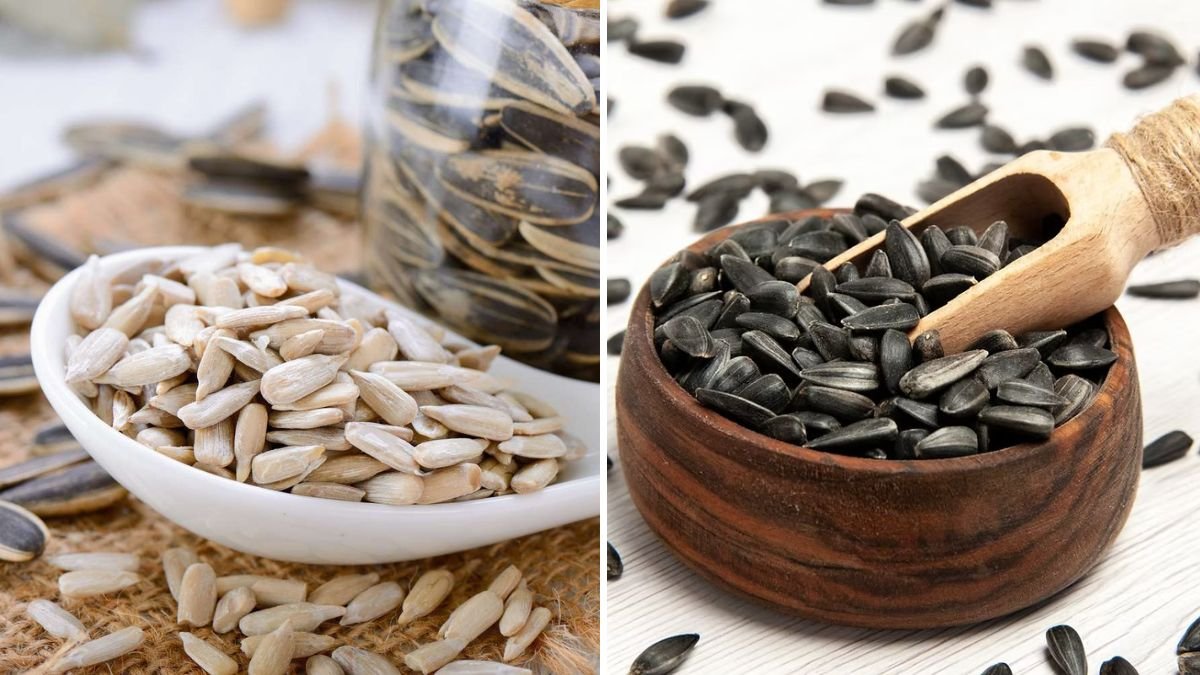Sunflowers (Helianthus annuus) are among the most beloved garden plants, admired for their towering stems, vibrant yellow petals, and striking seed heads. Beyond their ornamental beauty, sunflowers provide an abundant source of edible seeds, which are rich in protein, healthy fats, vitamins, and minerals. Collecting sunflower seeds allows gardeners to enjoy fresh seeds for consumption, snacks, cooking, or replanting in the following season. However, improper harvesting can damage the flower head, reduce seed quality, or even prevent future flowering. This article provides a comprehensive guide on collecting sunflower seeds carefully, including timing, techniques, drying, cleaning, storage, and tips for sustainable seed-saving.
Why Collect Sunflower Seeds
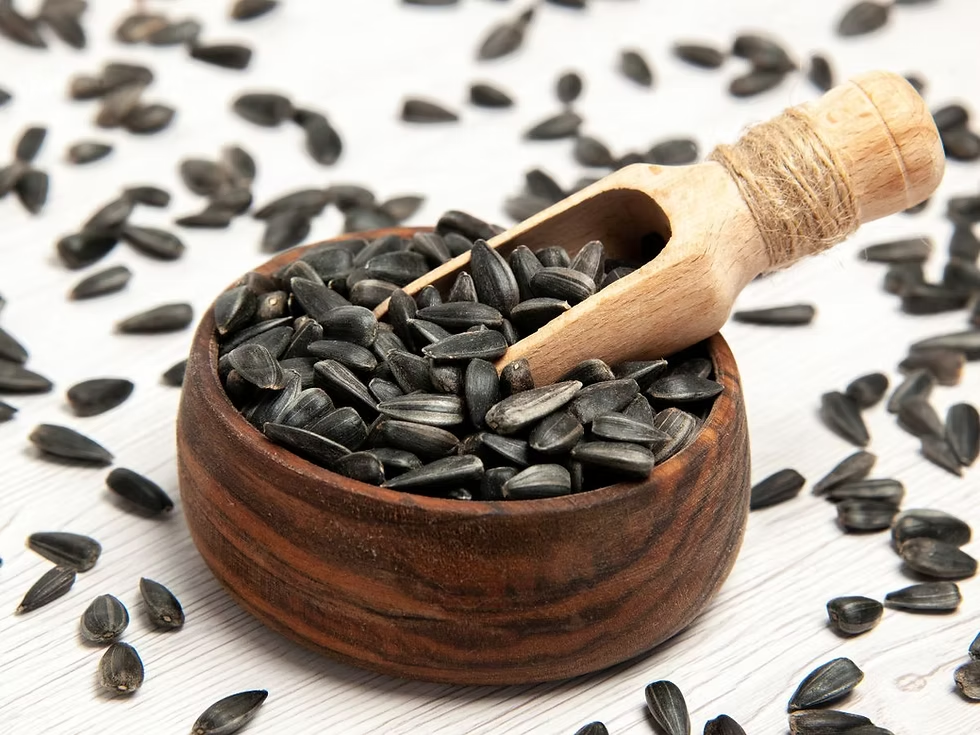
Harvesting sunflower seeds offers numerous advantages:
- Fresh, High-Quality Seeds: Homegrown seeds are often fresher and more nutritious than store-bought alternatives.
- Cost Savings: Reduces the need to purchase seeds for planting or snacking.
- Seed Saving for Next Season: Allows gardeners to select the best-performing plants for future planting.
- Educational Opportunity: Offers a practical way to understand plant life cycles, pollination, and seed maturation.
- Sustainability: Encourages self-sufficient gardening and reduces reliance on commercial seed production.
Step 1: Choosing the Right Sunflower Plants
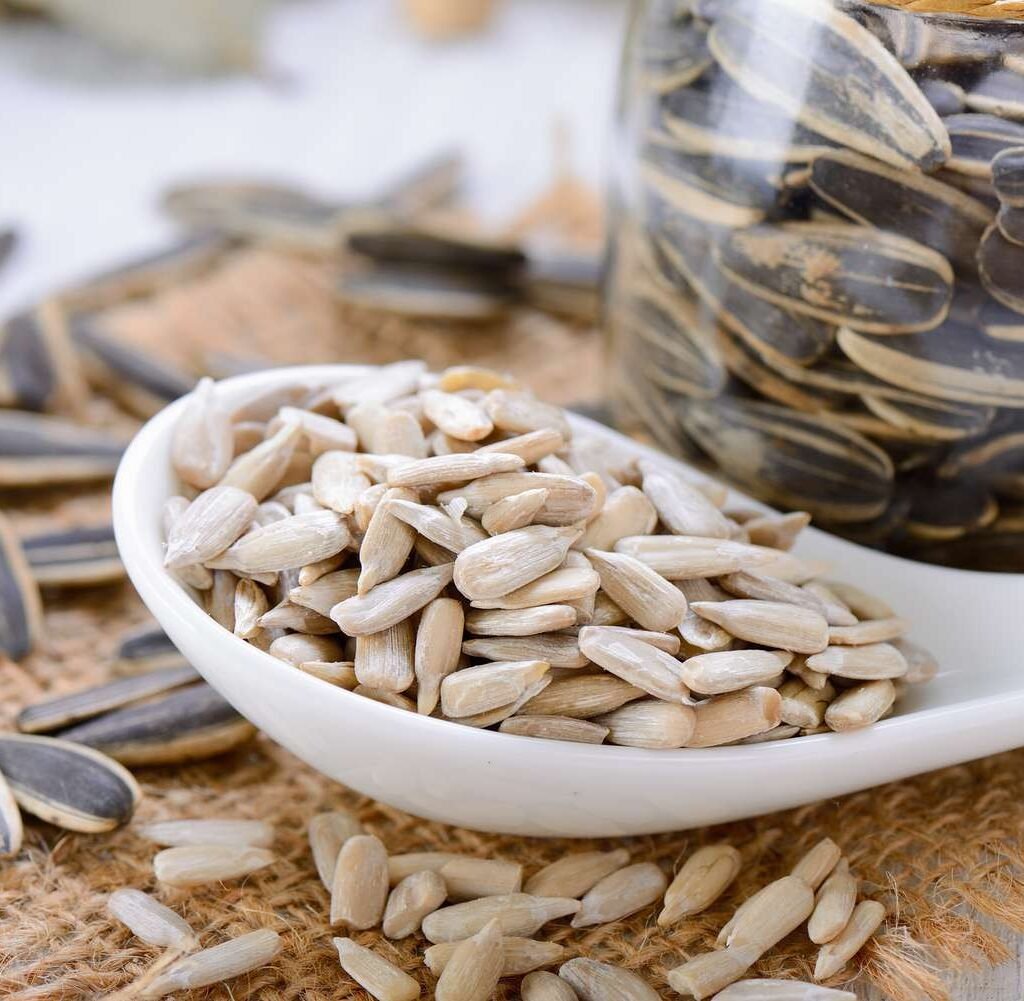
Selecting suitable sunflower plants is essential for successful seed collection:
- Healthy Plants: Choose tall, strong plants with vibrant, fully developed flower heads.
- Disease-Free: Avoid plants affected by mildew, pests, or fungal infections to ensure seed quality.
- True-to-Type Varieties: Open-pollinated or heirloom varieties are ideal if seeds are saved for replanting, as hybrid seeds may not produce true offspring.
- Flower Size: Larger flower heads usually produce more seeds, making harvesting more efficient.
Tips: Observe sunflower growth throughout the season to identify the most vigorous and productive plants for seed collection.
Step 2: Understanding Seed Maturity
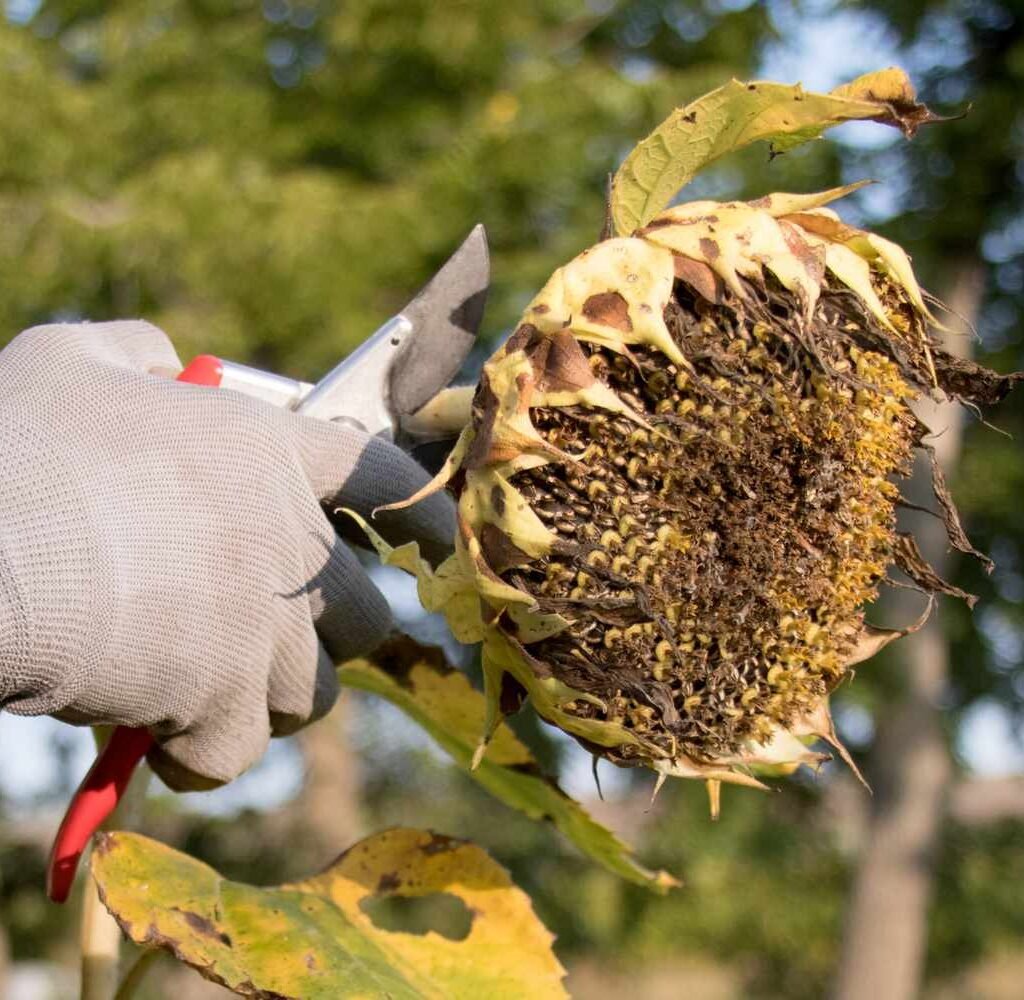
Timing is critical to collect seeds without damaging the flower:
Signs of Seed Maturity:
- Back of the Flower Head: The back should turn from green to yellow-brown.
- Petal Drop: Most petals have wilted and fallen naturally.
- Seed Development: Seeds are plump, firm, and fully formed. They should be black-and-white striped (depending on variety) or dark gray.
- Moisture Content: Seeds should be dry enough that pressing them does not release liquid or feel soft.
Best Time to Harvest:
- Usually late summer to early autumn, depending on the growing season.
- Avoid harvesting too early, as immature seeds may be soft and undeveloped.
- Do not wait until the plant is overripe, as seeds can fall off or attract birds and pests.
Step 3: Preparing for Harvest
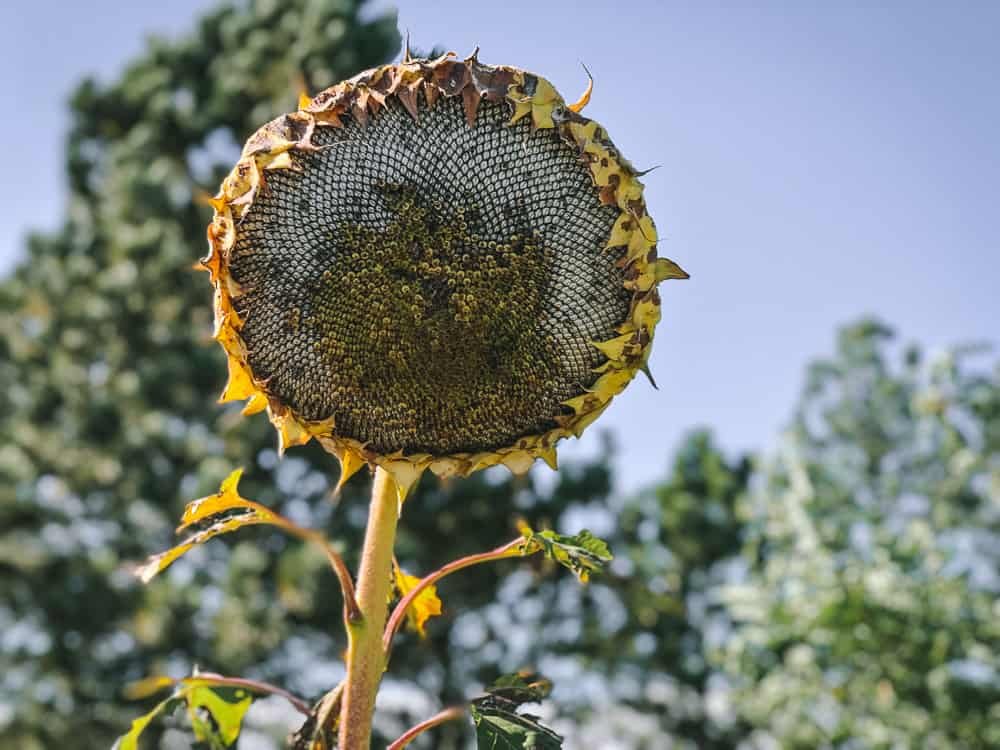
Before collecting seeds, gather the necessary tools and materials:
- Sharp garden shears or scissors: For cutting flower heads cleanly.
- Basket or container: To gently hold harvested flowers without crushing seeds.
- Protective gloves: Optional, as sunflower stems can be coarse and prickly.
- Netting or mesh (optional): To protect seeds from birds if harvesting is delayed.
Tips: Avoid harvesting during wet weather, as moisture can promote mold growth during drying.
Step 4: Harvesting Sunflower Seeds
Harvesting sunflower seeds without damaging the flower requires careful handling:
Step 1: Cut the Flower Head
- Leave 6–12 inches of stem attached to the flower head for easier handling and hanging.
- Use a sharp, clean tool to make a clean cut, avoiding crushing the seeds.
Step 2: Protect Seeds During Collection
- Gently place the flower head in a basket or container with the seeds facing up.
- If birds are attracted to the seeds, cover the head with a paper bag or fine mesh to prevent seed loss.
Step 3: Avoid Handling the Seeds Directly
- Minimize touching the seeds while the flower is still fresh. Handling can dislodge seeds or introduce moisture and oils that reduce shelf life.
Step 5: Drying Sunflower Seeds
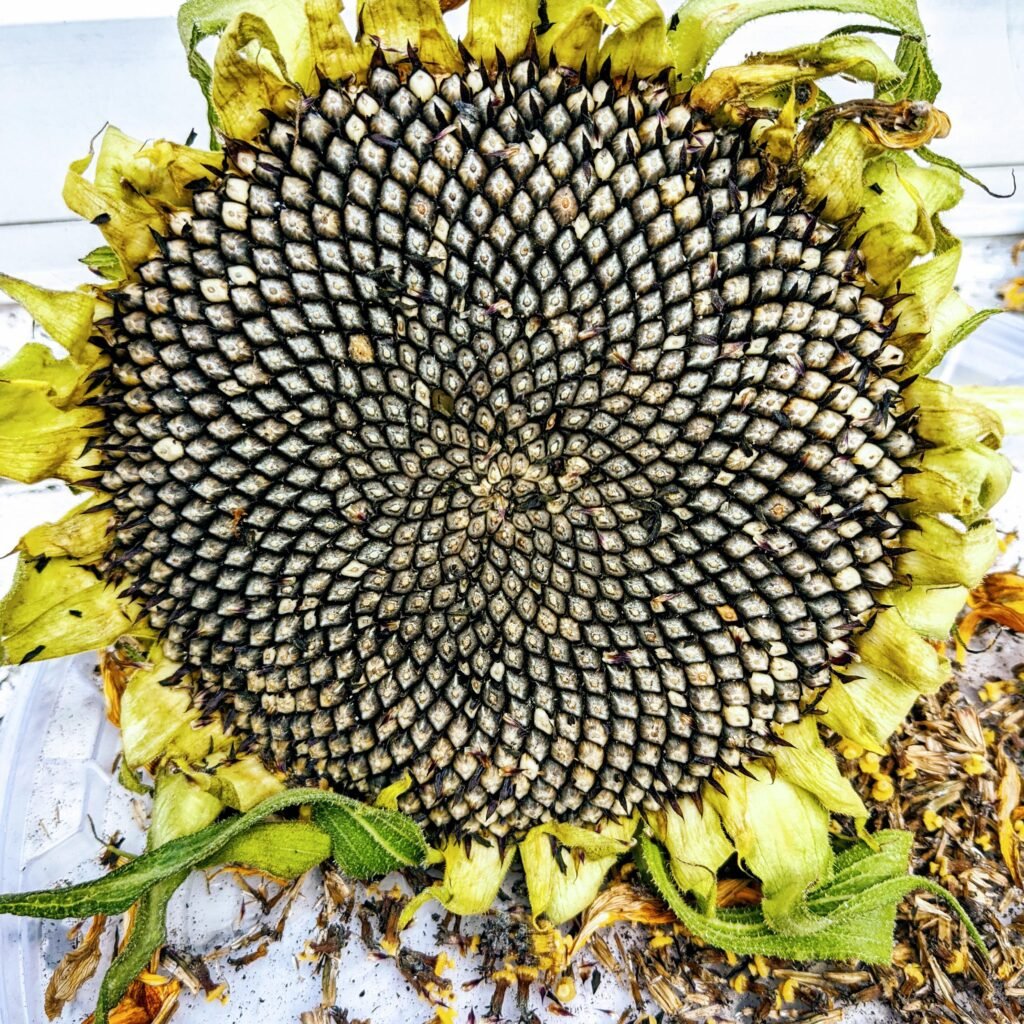
Proper drying ensures long-lasting, high-quality seeds:
Step 1: Air Drying
- Hang sunflower heads upside down in a dry, well-ventilated, and shaded area.
- Drying usually takes 1–3 weeks, depending on humidity and weather conditions.
- Ensure no direct sunlight, as it can bleach seeds and reduce oil content.
Step 2: Tray Drying
- Place flower heads on a flat, ventilated tray with seeds facing up.
- Turn heads occasionally to ensure uniform drying.
Tips: Seeds are fully dry when they can be easily removed from the flower head without sticking or feeling soft.
Step 6: Removing Seeds from the Flower Head
Once the flower head is fully dry:
- Manual Removal: Rub the seeds gently with your fingers, working from the center outward.
- Beating Method: Hold the flower over a container and tap the back lightly to release seeds.
- Screen or Sieve: Use a mesh screen to separate seeds from chaff and debris.
Tips: Work carefully to avoid breaking seeds, as cracked seeds have a shorter shelf life and reduced germination if saving for planting.
Step 7: Cleaning and Sorting Seeds
Clean seeds to remove debris and ensure quality:
- Separate Debris: Remove any plant material, dried petals, or small fragments.
- Sort Seeds: Discard damaged, shriveled, or moldy seeds.
- Optional Rinsing: For edible seeds, rinse in water and allow them to air dry completely before storage.
Tips: Clean, sorted seeds last longer and provide better germination rates.
Step 8: Storing Sunflower Seeds
Proper storage is key for maintaining freshness and viability:
Storage Containers:
- Airtight glass jars or plastic containers for dry seeds.
- Paper envelopes or cloth bags for seeds intended for planting.
Storage Conditions:
- Cool, dry, and dark place (ideally below 70°F or 21°C).
- Avoid moisture and humidity, which can cause mold or sprouting.
- Label containers with variety, collection date, and intended use.
Tips: Sunflower seeds can remain viable for planting up to 2–3 years when stored properly, while edible seeds may last longer if kept dry and sealed.
Step 9: Using Collected Sunflower Seeds
Sunflower seeds can serve multiple purposes:
- Replanting: Choose the largest, healthiest seeds for next season’s garden.
- Snacking: Roast seeds with or without seasoning for a nutritious snack.
- Culinary Uses: Add seeds to bread, salads, granola, or desserts.
- Wildlife Feed: Provide seeds for birds and small mammals, supporting local biodiversity.
Tips: For planting, pre-soak seeds overnight to improve germination rates.
Step 10: Tips for Sustainable Seed Saving
- Grow Open-Pollinated Varieties: Ensures seeds remain true-to-type for next year.
- Isolate Varieties: Prevent cross-pollination by spacing or covering flower heads.
- Observe Plant Health: Save seeds only from strong, disease-free plants.
- Record Keeping: Track variety, planting date, and harvest details for better planning.
Advantages of Proper Sunflower Seed Collection
- Maximizes Yield: Ensures seeds are harvested at peak size and quality.
- Preserves Plant Varieties: Allows gardeners to maintain favorite sunflower cultivars.
- Nutritional Benefits: Freshly harvested seeds retain higher nutrients and oils.
- Cost Savings: Reduces reliance on store-bought seeds for planting and snacking.
- Promotes Sustainable Gardening: Supports self-sufficiency and eco-friendly practices.
Conclusion
Collecting sunflower seeds without damaging the flower is a rewarding and practical gardening skill. By carefully selecting healthy plants, harvesting seeds at the optimal stage, drying properly, and storing them in controlled conditions, gardeners can enjoy high-quality seeds for consumption, replanting, or wildlife feed. Proper seed-saving techniques also support sustainable gardening, preserve favorite varieties, and maximize the beauty and utility of sunflower plants. With patience, attention, and careful handling, sunflower seed collection can become an enjoyable, educational, and fruitful activity, ensuring your garden thrives year after year.
